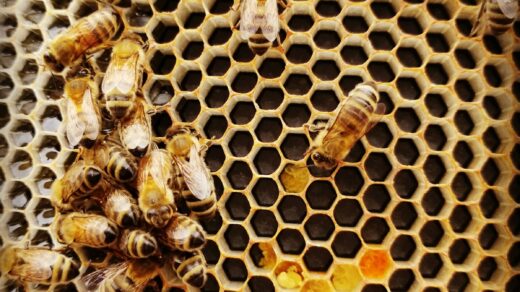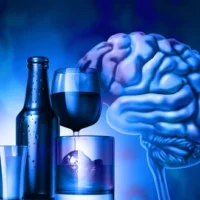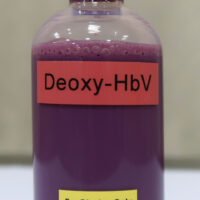Introduction To Artificial Heart
The human heart
The heart is a mesodermally derived organ that is situated in the mid-thoracic cavity in between the two lungs, slightly tilted to the left. It pumps blood throughout the body in a process called circulation. Apart from the heart, the artery, vein, and blood constitute the cardiovascular system. The size of the heart is the size of a clenched fist.
The main functions of the heart are:
-
It pumps blood throughout the body.
-
The heart also ensures that adequate blood pressure is maintained in the body.
But, there are certain disorders of the human circulatory system like heart failure, CAD (Coronary Artery Disease), Angina, cardiac arrest, heart attack, etc…
To overcome certain disorders, artificial hearts have been developed to serve patients suffering from cardiac problems or heart failure.
Artificial heart
An artificial heart is a device designed to completely replace a seriously damaged heart, temporarily take over the function of a failing heart until a donor’s heart is available for a heart transplant, or perform the job of a natural heart during surgery. The two main types of artificial hearts are the heart-lung machine and the mechanical heart.
History of Artificial Heart
The first successful clinical use of a heart-lung machine was developed by American surgeon John H. Gibbon in 1953. During this operation for the surgical closure of an atrial septal defect, cardiopulmonary bypass was achieved by a machine equipped with an oxygenator developed by Gibbon.
In 1932, an American surgeon, Michael E. DeBakey developed a roller pump. Since then, heart-lung machines have been greatly improved with smaller and more efficient oxygenators, allowing them to be used not only in adults but also in children and even newborn infants.
Types Of Artificial Heart
-
Total Artificial Heart (TAH)
-
Ventricular Assist Devices (VADs)
Total Artificial Heart (TAH)
The total artificial heart (TAH) is a mechanical device designed to replace the lower two chambers of the heart (ventricles) that pump blood to the lungs and then out to the body
Ventricular Assist Devices (VADs)
Ventricular assist devices (VADs) are implantable mechanical pumps used as a form of heart failure treatment to improve blood flow.
There are three types of VADs:
-A left ventricular assist device (LVAD) helps the left ventricle to pump and is the most commonly used.
-A right ventricular assist device (RVAD) supports the right ventricular pumping function.
-A biventricular assist device (BiVAD), which supports the pumping action of both the right and left ventricles.
Difference between TAH and VAD
Some patients who are waiting for a heart transplant will not undergo treatment with a VAD. For these patients, a temporary total artificial heart (TAH-t) is a plastic mechanical device that works inside the body. This device completely replaces the heart while waiting for a donor heart to become available.
A ventricular assist device (VAD), also known as a mechanical circulatory support device, is a machine that pumps blood from the lower chambers of the heart to the rest of the body. To implant the VAD in the heart, the doctor will need to perform open heart surgery, and if it is conducted smoothly, then it can save the life of the patient.
The doctor will recommend a VAD
If
The patient is not a candidate for a heart transplant.
A VAD can be a destination therapy for patients who can not have a heart transplant because of age or other factors. Heart failure is temporary. The doctor may recommend a VAD until the heart can pump blood on its own.
Commonly used VADs
A left ventricular assist device (LVAD) is a mechanical pump which is commonly used that provides implant in people who have heart failure. The device helps the lower left chambers (left ventricle) of the heart pump blood out of the ventricle to the aorta and the rest of the body. Because it helps the left ventricle, it’s a left ventricular assist device.A left ventricular assist device is for people with end-stage heart failure. It’s a bridge to transplant for people waiting for a heart transplant. It can also help people who aren’t candidates for a heart transplant.
How Artificial Heart Works
Understanding the AbioCor Artificial Heart: A Revolution in Medical Technology
The heart is the powerhouse of the human body, tirelessly pumping around 2,000 gallons of blood daily to ensure that oxygen and nutrients reach every part of the body. But like any engine, the heart can weaken or fail, leading to life-threatening conditions. For many years, a heart transplant was the primary option for those suffering from severe heart failure. However, the introduction of the AbioCor Implantable Replacement Heart marked a significant leap in medical technology, offering new hope to patients with end-stage heart failure.
The Evolution of Artificial Hearts
The AbioCor artificial heart was the first of its kind to be used in almost two decades.
This groundbreaking device is fully self-contained, designed to function within the human body without external connections. The AbioCor has the potential to significantly extend the life expectancy of patients who would otherwise have only days or weeks to live. Candidates for this device typically have a life expectancy of less than 30 days, with no other viable treatment options available.
The First Recipient and Early Successes
Robert Tools was the first person to receive the AbioCor artificial heart.
Despite facing post-surgery challenges, including an infection and the need for a ventilator, his mechanical heart continued to function flawlessly.
This success story demonstrated the potential of the AbioCor to improve and extend the lives of patients who had exhausted all other treatment options.
How the AbioCor Heart Functions
The AbioCor heart is a marvel of engineering, designed to mimic the natural pumping action of the human heart. In a healthy heart, blood is pumped in two stages:
first, the atria contract to send blood to the ventricles, and then the ventricles contract to push blood out of the heart.
The AbioCor, however, works slightly differently. While the natural atria continue to function as usual, the AbioCor replaces the ventricles.
Instead of pumping blood to the lungs and body simultaneously, it alternates, first sending blood to the lungs, then to the rest of the body. Despite this difference, the AbioCor can pump more than 10 liters of blood per minute, matching or even surpassing the capacity of a healthy human heart.
The Components of the AbioCor System
At the heart of the AbioCor system is a hydraulic pump, which drives the movement of hydraulic fluid to power the artificial ventricles. This fluid is shifted from side to side by a gear that spins at an impressive 10,000 revolutions per minute (rpm).
The system includes several key components:
– Hydraulic Pump
The core mechanism, where force applied at one point is transferred via an incompressible fluid to create pressure, powering the artificial heart.
– Porting Valve
This valve regulates the flow of hydraulic fluid, directing it to pump blood either to the lungs or to the rest of the body.
– Wireless Energy Transfer System:Known as the Transcutaneous Energy Transfer (TET) system, it uses magnetic force to transmit power across the skin, from an external battery to the internal components, without breaking the skin barrier.
– Internal Battery
A rechargeable battery implanted within the patient’s abdomen, providing 30 to 40 minutes of power for activities like showering when disconnected from the main battery pack.
– External Battery
This is carried around the waist in a Velcro belt pack, with each battery providing four to five hours of power before needing a recharge.
– Controller
A small electronic device implanted in the abdominal wall that monitors and adjusts the heart’s pumping speed.
The Future of Artificial Hearts
The AbioCor represents a significant advancement in artificial heart technology, offering a lifeline to patients who have no other options. While still in its early stages, the success of this device could pave the way for even more advanced artificial hearts, providing hope and extended life to many more patients in the future.
Impact of artificial heart on society
-
It extend life and enhance the quality of life.
-
It reduce the burden on organ donation.
-
It helps in driving technological innovation.
-
It helps in changing the prospective on life and death
FINAL WORDS
Artificial hearts represent a significant milestone in medical technology, offering a lifeline to those who once faced inevitable mortality due to end-stage heart failure.
It is essential to balance innovation with accessibility, ensuring that the benefits of artificial hearts are available to those in need while also addressing the broader implications on society.
The future of artificial hearts offers great potential, not only in prolonging life but also in transforming how we perceive living with a mechanical heart.
This technology merges the strength of human spirit with cutting-edge innovation, pushing the boundaries of what it means to survive and thrive with a synthetic heart.
Engage with Us:
Stay tuned for more captivating insights and News. Visit our Blogs and Follow Us on social media to never miss an update. Together, let’s unravel the mysteries of the natural world.














